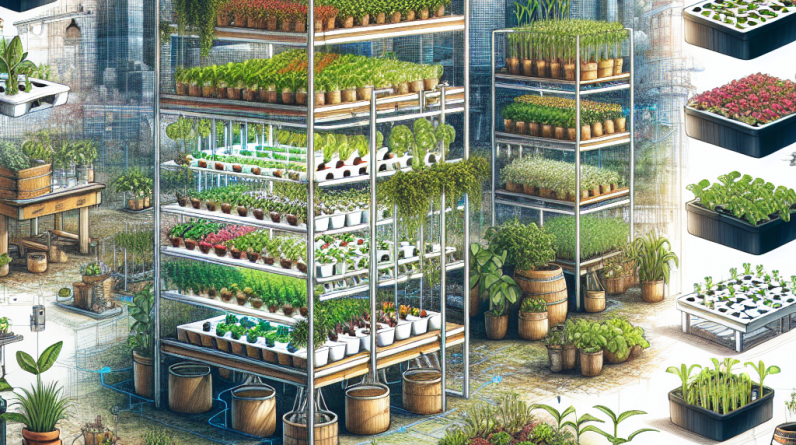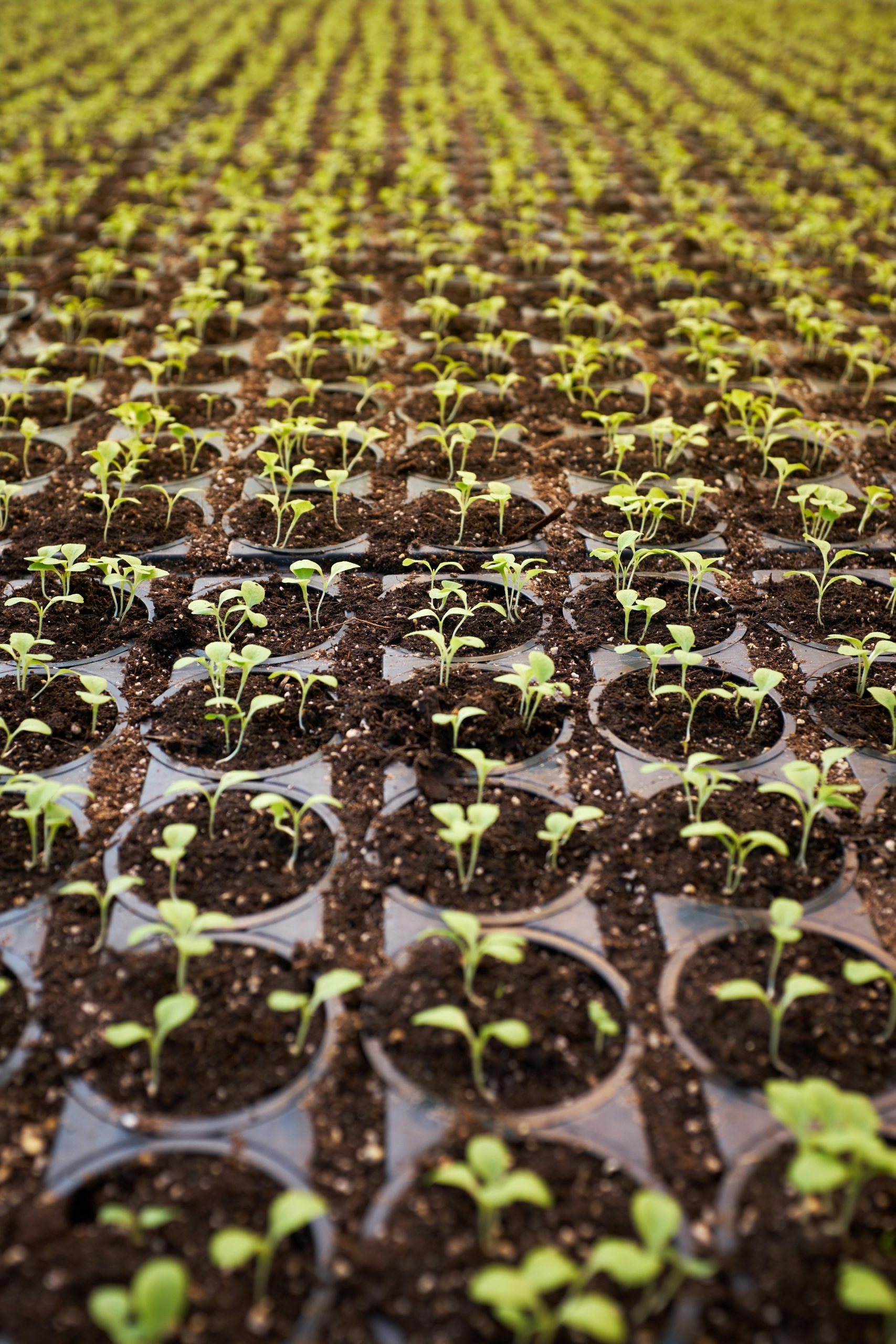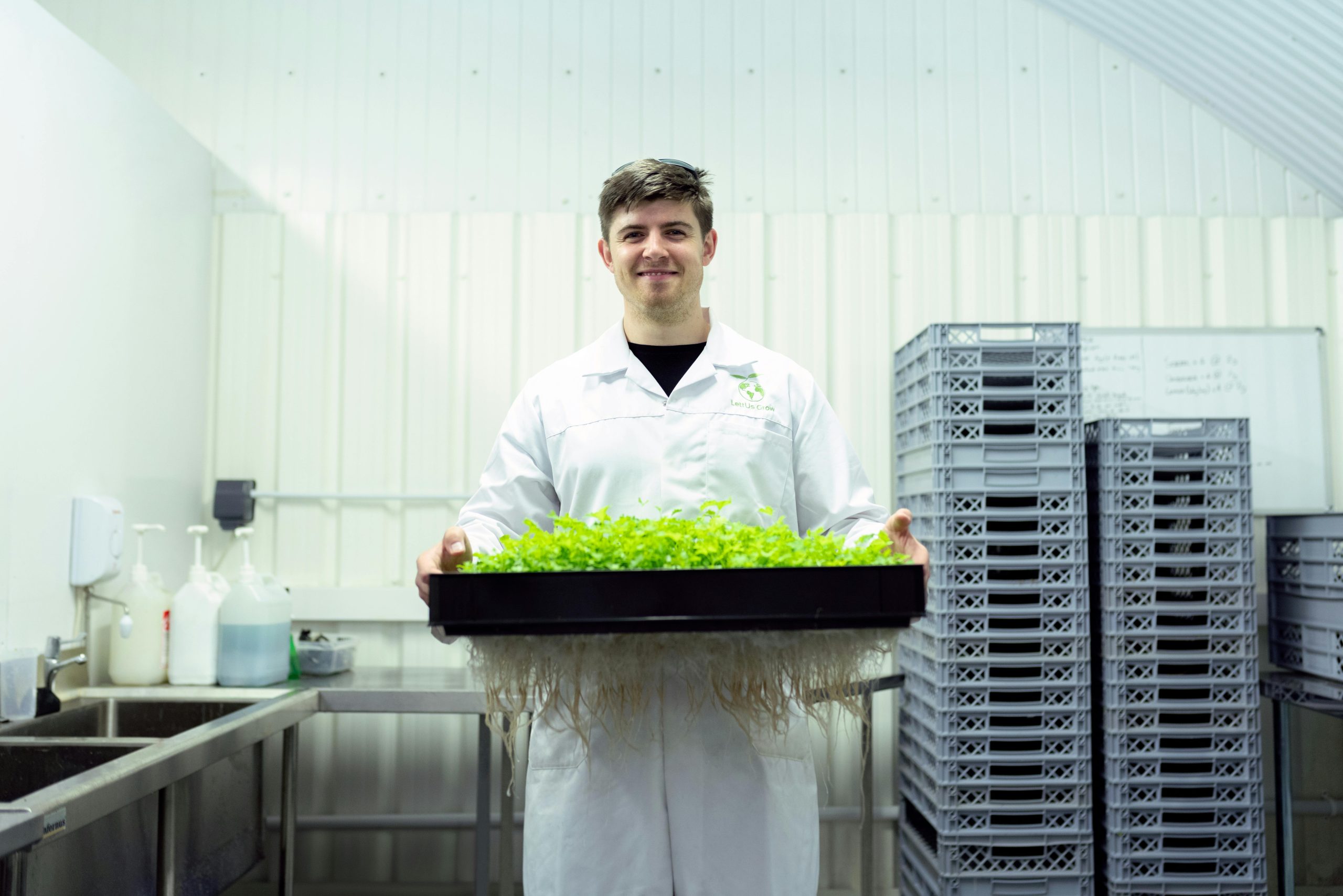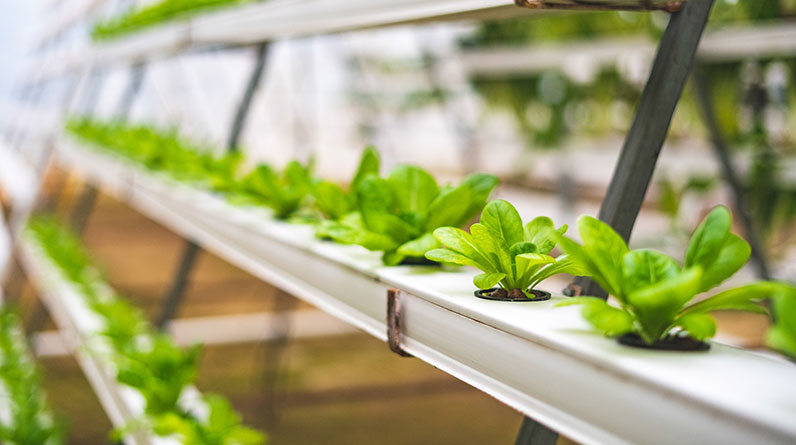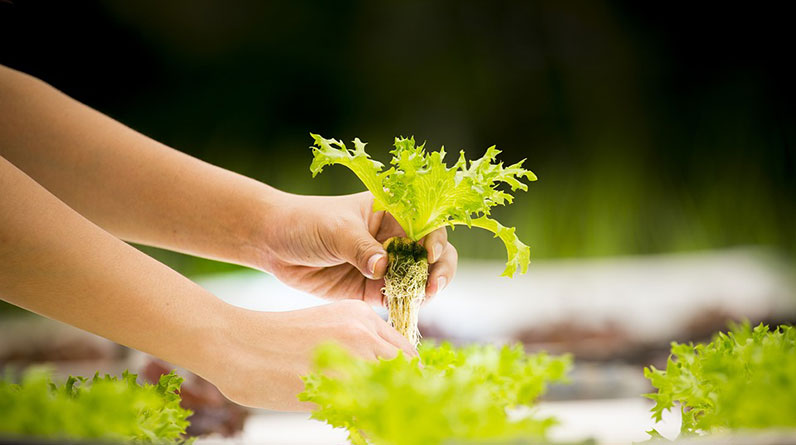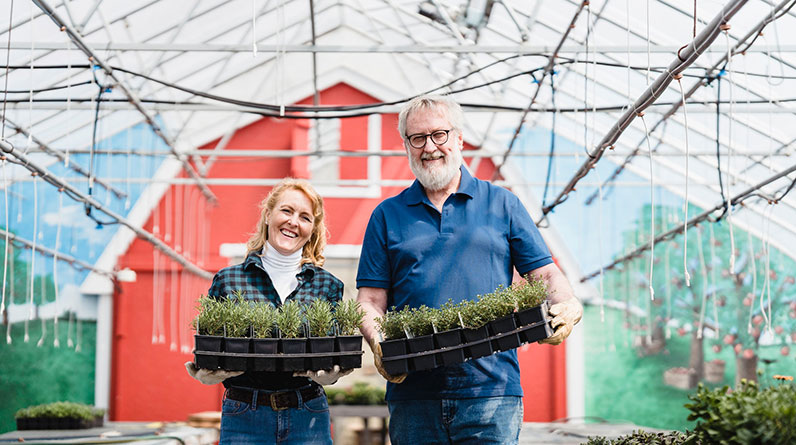
Hydroponic growing systems have become increasingly popular in recent years due to their numerous advantages over traditional soil-based gardening. With hydroponics, you can grow plants in a controlled environment without the need for soil, which means you can grow more plants in a smaller space and with less water. If you’re new to hydroponics and wondering how to set up a hydroponic growing system, you’re in the right place.
In this guide, we’ll take you through the basics of hydroponics and show you how to set up your own hydroponic growing system. We’ll cover everything from the different types of hydroponic systems available to the best plants to grow in a hydroponic setup. We’ll also discuss the equipment you’ll need, including grow lights, pumps, and nutrients.
One of the most significant advantages of hydroponics is that it allows you to grow plants year-round, regardless of the weather outside. This means you can enjoy fresh produce all year long, even in the dead of winter. With hydroponics, you can also control the environment your plants grow in, which means you can optimize their growth and yield.
Whether you’re looking to grow herbs, vegetables, or even cannabis, a hydroponic growing system is an excellent choice. With a little bit of knowledge and the right equipment, anyone can set up a hydroponic garden in their home. So, let’s get started and learn how to set up a hydroponic growing system.
How to Setup Hydroponic Growing System
Hydroponic growing systems are becoming increasingly popular among gardeners and farmers alike. With hydroponics, you can grow plants without soil, using nutrient-rich water instead. This method of growing offers numerous benefits, including increased yields, faster growth rates, and reduced water usage. In this article, we will discuss how to set up your own hydroponic growing system.
First, you will need to choose a location for your hydroponic system. Ideally, this location should be indoors or in a greenhouse, as it will provide a controlled environment for your plants. Once you have chosen a location, you will need to decide on the type of hydroponic system you want to use. There are several different types of systems to choose from, including deep water culture, nutrient film technique, and drip irrigation.
After selecting a system, you will need to gather the necessary materials. This will typically include a reservoir, tubing, a pump, grow trays, growing medium, and nutrient solution. Once you have all of your materials, you can begin assembling your system. Follow the manufacturer’s instructions carefully to ensure that your system is set up correctly.
Once your system is set up, you can begin planting your crops. Choose plants that are well-suited for hydroponic growing, such as lettuce, herbs, and tomatoes. Be sure to monitor your plants regularly and adjust the nutrient solution as needed. With proper care and maintenance, your hydroponic system can provide you with a bountiful harvest.
In conclusion, setting up a hydroponic growing system is a great way to grow plants without soil. By following the steps outlined in this article, you can create your own system and start growing your own fresh produce. With a little bit of effort, you can enjoy the benefits of hydroponic growing for years to come.
Benefits of Hydroponic Gardening
 Hydroponic gardening is a method of growing plants without soil. Instead, the plants are grown in a nutrient-rich water solution. This method of gardening has several benefits that make it a popular choice for many gardeners.
Hydroponic gardening is a method of growing plants without soil. Instead, the plants are grown in a nutrient-rich water solution. This method of gardening has several benefits that make it a popular choice for many gardeners.
One of the main benefits of hydroponic gardening is that it allows for faster growth and higher yields. This is because the plants are able to absorb nutrients more efficiently in a hydroponic system than they would in soil. In addition, hydroponic systems can be set up indoors, allowing for year-round growth and protection from pests and weather conditions.
Another benefit of hydroponic gardening is that it uses less water than traditional gardening methods. This is because the water in a hydroponic system is recirculated and reused, rather than being lost to evaporation or runoff. This makes hydroponic gardening a more sustainable and environmentally-friendly option.
Hydroponic gardening also allows for greater control over the growing conditions of the plants. This means that gardeners can adjust the nutrient levels, pH levels, and other factors to create the optimal growing environment for their plants. This can lead to healthier, more robust plants with higher yields.
In addition, hydroponic gardening can be a great option for those with limited space or mobility. Because hydroponic systems can be set up indoors and require less space than traditional gardens, they are a great option for apartment dwellers or those with small yards. They also require less physical labor than traditional gardening methods, making them a great option for those with mobility issues.
Overall, hydroponic gardening offers several benefits that make it a great option for those looking to grow plants in a sustainable, efficient, and controlled manner.
Types of Hydroponic Systems
When it comes to hydroponic systems, there are several types to choose from. Each type has its own advantages and disadvantages, making it important to choose the right one for your needs.
The first type of hydroponic system is the deep water culture system. This system involves suspending plants in nutrient-rich water, with their roots submerged in the solution. This system is easy to set up and maintain, making it a great option for beginners.
Another type of hydroponic system is the drip system. This system involves using a pump to drip nutrient solution onto the plants’ roots. This system is highly customizable, allowing growers to adjust the amount of nutrients and water delivered to each plant.
The ebb and flow system is another popular hydroponic system. This system involves flooding the plants’ roots with nutrient solution, then draining it away. This system is great for plants that require periodic dry periods, such as strawberries.
The nutrient film technique system is a popular choice for growing leafy greens. This system involves a thin film of nutrient solution flowing over the plants’ roots, providing them with a constant supply of nutrients.
Lastly, the aeroponic system involves suspending plants in a mist of nutrient solution. This system is highly efficient, using less water and nutrients than other systems. However, it can be more difficult to set up and maintain.
In conclusion, choosing the right hydroponic system for your needs is essential. Consider the type of plants you want to grow, your level of experience, and your budget when selecting a system. With the right system in place, you can enjoy a bountiful harvest of fresh, healthy produce.
Choosing the Right Hydroponic System
When it comes to setting up a hydroponic growing system, choosing the right system is crucial for success. There are several different types of hydroponic systems to choose from, each with its own benefits and drawbacks.
One popular type of hydroponic system is the deep water culture system. This system involves suspending plant roots in a nutrient-rich solution, allowing them to absorb the nutrients they need to grow. This system is relatively easy to set up and maintain, making it a great choice for beginners.
Another popular option is the ebb and flow system, which involves flooding the plant roots with nutrient-rich water before draining it away. This system is also relatively easy to set up and maintain, and it allows for a high degree of control over the nutrient levels in the water.
Drip systems are another common choice, involving a slow drip of nutrient-rich water onto the plant roots. This system is highly customizable, allowing for precise control over the nutrient levels and water flow.
Aeroponic systems are a more advanced option, involving suspending plant roots in a nutrient-rich mist. This system requires more maintenance and attention to detail, but it can produce impressive results.
Ultimately, the right hydroponic system for you will depend on your specific needs and preferences. Consider factors such as space, budget, and the types of plants you want to grow when making your decision.
By carefully choosing the right hydroponic system, you can set yourself up for success in your hydroponic growing endeavors.
Hydroponic growing systems are becoming increasingly popular among gardeners and farmers alike due to their efficiency and ability to produce high-quality crops. However, to set up a successful hydroponic system, it is essential to have the right supplies. In this article, we will discuss the essential hydroponic supplies you need to get started.
First and foremost, you will need a hydroponic reservoir. This is where your plants will be grown and it is essential to choose the right size for your needs. Make sure to choose a reservoir that is large enough to accommodate your plants and has a lid to prevent evaporation.
Next, you will need a hydroponic pump. This will circulate the nutrient solution throughout your system and ensure that your plants receive the necessary nutrients. Be sure to choose a pump that is powerful enough to handle the size of your system.
Another essential supply is a grow tray. This is where your plants will be placed and it is important to choose a tray that is the right size for your reservoir. Make sure to choose a tray that is made from a durable material such as plastic or metal.
In addition to these supplies, you will also need a pH meter to monitor the acidity of your nutrient solution, a water thermometer to monitor the temperature of your water, and a timer to control the amount of light your plants receive.
Overall, setting up a successful hydroponic growing system requires careful planning and the right supplies. By investing in these essential hydroponic supplies, you can ensure that your plants thrive and produce high-quality crops.
Preparing the Hydroponic Solution
When it comes to setting up a hydroponic growing system, one of the most important steps is preparing the hydroponic solution. This solution is what provides your plants with all the nutrients they need to grow and thrive without soil.
To start, you’ll need to gather the necessary ingredients for your hydroponic solution. This typically includes water, fertilizer, and any additional nutrients or supplements your plants may need. It’s important to choose high-quality ingredients to ensure your plants receive the best possible nutrition.
Once you have your ingredients, it’s time to mix them together. The exact ratio will depend on the type of plants you’re growing and the specific nutrients they require. Be sure to follow the instructions carefully and measure everything precisely to avoid over- or under-fertilizing your plants.
After mixing your hydroponic solution, it’s important to test the pH levels. Most plants prefer a slightly acidic environment, with a pH between 5.5 and 6.5. If your solution is too acidic or too alkaline, you may need to adjust the pH using a pH up or pH down solution.
Finally, you’ll need to regularly monitor and adjust your hydroponic solution as needed. This may involve adding more water or nutrients, adjusting the pH levels, or flushing the system to remove any excess salts or minerals.
With the right preparation and care, your hydroponic solution can provide your plants with everything they need to grow strong and healthy. So take the time to get it right, and enjoy the fruits of your labor!
Planting in a Hydroponic System
Hydroponic growing systems are gaining popularity among plant enthusiasts due to their efficiency and ability to produce high yields in limited space. With the right setup and maintenance, hydroponic systems can provide a consistent supply of fresh produce all year round. However, planting in a hydroponic system requires some knowledge and preparation.
Firstly, it is essential to choose the right plants for your hydroponic system. Leafy greens, herbs, and small fruiting plants such as strawberries are ideal for hydroponic growing. Avoid plants that grow too large or require too much space, such as tomatoes or watermelons.
Next, select the appropriate hydroponic system for your plants and space. There are various types of hydroponic systems, including deep water culture, nutrient film technique, and drip irrigation. Each system has its advantages and disadvantages, so it’s crucial to research and choose the one that suits your needs.
When planting in a hydroponic system, it’s important to use the correct growing medium. Commonly used growing media include rockwool, perlite, and coconut coir. The growing medium provides support for the plants and allows the roots to absorb nutrients and water.
Finally, ensure that your hydroponic system has the right balance of nutrients, pH levels, and lighting. Nutrient solutions provide the necessary minerals and vitamins for plant growth, while pH levels affect nutrient absorption. Lighting is also crucial for plant growth and should be adjusted depending on the type of plant and growth stage.
In conclusion, planting in a hydroponic system requires careful consideration and preparation. Choosing the right plants, hydroponic system, growing medium, and maintaining the correct nutrient balance, pH levels, and lighting are essential for a successful harvest. With proper care and attention, a hydroponic system can provide a consistent supply of fresh produce all year round.
Maintaining a Hydroponic System
As a hydroponic grower, maintaining your system is crucial for the success of your plants. Regular maintenance ensures that your plants receive the necessary nutrients and water, and prevents the growth of harmful bacteria and algae. Here are some tips for maintaining your hydroponic system.
Firstly, check the pH and nutrient levels of your solution regularly. pH levels should be between 5.5 and 6.5 for most plants, while nutrient levels should be adjusted according to the growth stage of your plants. Use a pH meter and a TDS meter to measure these levels accurately.
Secondly, clean your system regularly. This includes cleaning the reservoir, the pump, and the tubing. Use a mild detergent or hydrogen peroxide to clean the reservoir and pump, and replace the tubing every 6 months to prevent clogs and leaks.
Thirdly, monitor the temperature and humidity levels of your grow room. The ideal temperature for most plants is between 68°F and 78°F, while humidity levels should be between 50% and 70%. Use a thermometer and a hygrometer to measure these levels, and adjust your ventilation and air conditioning accordingly.
Fourthly, inspect your plants for signs of pests and diseases. Common pests include spider mites, aphids, and whiteflies, while common diseases include root rot and powdery mildew. Use organic pesticides and fungicides to control these problems, and remove any infected plants to prevent the spread of disease.
By following these tips, you can maintain a healthy and productive hydroponic system. Remember to keep a record of your pH and nutrient levels, cleaning schedule, and pest and disease control measures for future reference. Happy growing!
In conclusion, setting up a hydroponic growing system can be a rewarding and efficient way to grow plants. We covered a variety of topics in this post, including the benefits of hydroponic gardening, the different types of hydroponic systems, how to choose the right system, and the essential supplies needed. We also discussed how to prepare the hydroponic solution, plant in a hydroponic system, and maintain it.
One of the key takeaways from this post is that hydroponic gardening can be a space-saving and water-efficient way to grow plants. By eliminating soil, plants can grow faster and with fewer resources. Additionally, hydroponic systems can be tailored to fit a variety of plant types and growing environments.
When setting up a hydroponic system, it’s important to choose the right type of system for your needs and to have all the necessary supplies on hand. It’s also crucial to maintain the system properly to ensure optimal plant growth.
Looking to the future, we can expect to see continued advancements in hydroponic technology and an increased focus on sustainable agriculture practices. As more people become interested in growing their own food, hydroponic gardening will likely become even more popular.
Thank you for reading this post and we hope you found it helpful. If you have any questions or feedback, please leave a comment below. Happy growing!
Related Content
- Enhancing Plant Growth with the Right Hydroponic Growing System Accessories
- Small Space? No Problem with Hydroponic Farming
- The Ultimate Guide to the 2025 Hydroponic Water System: 10 Effective Tips
- The Ultimate Guide to the Best Hydroponic Lettuce Tower Systems for 2025
- Practical Tips for Hydroponic Success


